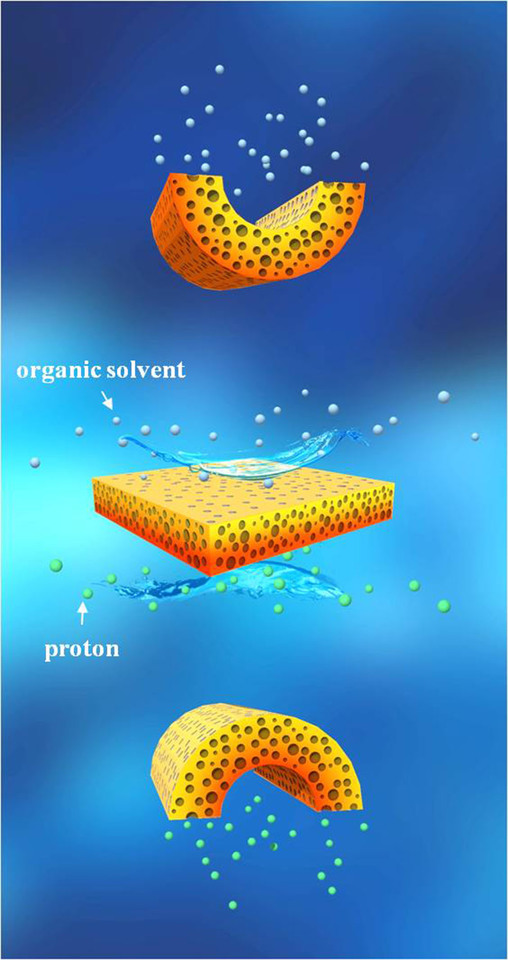The paper in Nature Communications is here: https://go.nature.com/2jiD2nK
Our mother nature has continuously inspired materials chemists to build up artificial actuators to mimic their functions in term of bending, twisting and folding at different length levels. In spite of great progress achieved so far, many questions and challenges remain open to be addressed. In particular, how to align the basic function of soft actuators with real environment conditions (multiple stimuli, being dynamic and multiple events) at an ultrasensitivity asks for a higher level of structure complexity, adaptability and/or multi-responsiveness.
Along our long-term goal to fabricate smart soft actuators, in 2014 our group has developed a simple and effective way to fabricate a porous membrane actuator. In this approach, the diffusion of an aqueous ammonia solution into a imidazolium-based poly(ionic liquid) (PIL)/poly(aromatic acid) physical blend film produced a nanoporous membrane carrying an unusual electrostatic complexation (EC) gradient along its cross-section, which rendered the membrane an actuation function in contact with solvents (Nat. Commun. 5, 4293 (2014)). Very recently, the chemistry of poly(1,2,4-triazolium) PILs has emerged and served as polycarbene precursor under a weak base condition, a chemical property that was adopted to immobilize metal clusters of high catalytic activity (J. Am. Chem. Soc. 139, 8971–8976 (2017)). Via combining the latest progress in polycarbene chemistry and membrane technique, we present here a nanoporous membrane actuator, which in spite of a rather simple synthetic method featured tandem structure gradients in electrostatic complexation (EC) degree and in carbene-NH3 adduct (CNA) density along its cross-section. It demonstrates the ultra-high sensitivity among all soft actuators towards weak acid in aqueous media. Through competing actuation of the two gradients, it is capable of monitoring an entire process of proton-involved chemical reactions that comprise multi-stimuli and operational steps.
Although the (poly)carbene chemistry is well known especially in catalysis, extending such chemistry to materials science application is still in its infancy. Here, a proof of concept presented by involving simple polycarbene chemistry into the membrane fabrication process radically enhances the chemical structural complexity and functionality of soft actuators. We expect that the current research will inspire researchers to reach a higher level of structural design of soft actuator by simple chemistry tools, and enable soft actuator on the way stepwise to real-life application.





Please sign in or register for FREE
If you are a registered user on Research Communities by Springer Nature, please sign in